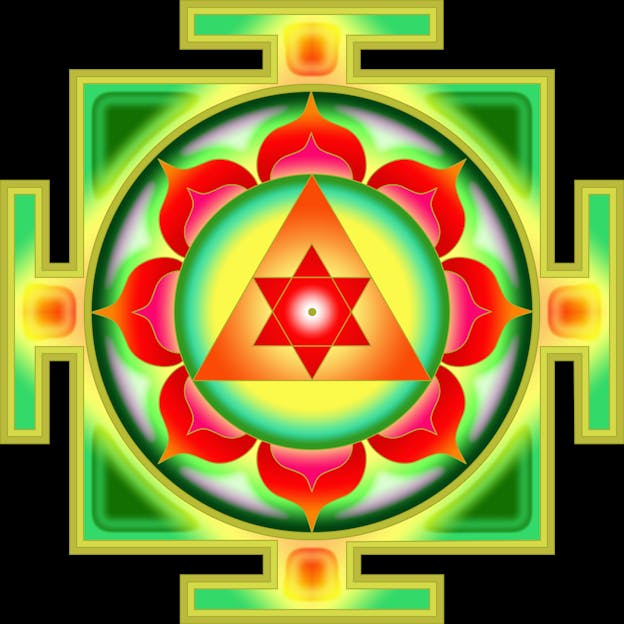
Yantra

In Hinduism, a yantra is a geometrical diagram representing the universe. It is used in Hindu worship and meditation, especially in Tantrism. A yantra is quite similar to a mandala, but a yantra is different in that it can be a three-dimensional object of worship as well as a two-dimensional diagram.
LIke the mandala, the yantra symbolizes cosmogenic development, from the absolute in the center to the material world at the edges. Yantras often have a seed mantra inscribed on them, and they are considered the verbal equivalent of a mantra.
A yantra is only created during a highly complex ritual in a purified and ritually consecrated place. A three-dimensional yantra is made of stone or metal plates and is imbued with the power of a deity.
It is then meditated upon as the deity, and is used as an instrument for visions of the unseen. A yantra is also drawn on the site where a temple will be built.
The best known yantra is the Sri Yantra or Sri Cakra, which is especially used in the Sri Kula tradition of Tantrism. It is made of nine intersecting isosceles triangles of different sizes: five "female" triangles pointing downwards to represent Shakti and four "male" triangles pointing upwards representing Shiva.
Sources
- John Bowker, ed., Oxford Concise Dictionary of World Religions (2000).
- "Hinduism." Encyclopædia Britannica (2007). Encyclopædia Britannica Online.
Article Info
| Article Title | Yantra |
|---|---|
| Date Published |
March 17, 2015
|
| Last Updated |
August 30, 2024
|
| Full URL |
https::///yantra
|
| Short URL | https://rlft.co/845 |
| MLA Citation | “Yantra.” ReligionFacts. 17 Mar 2015, https::///yantra. Accessed 15 Apr 2025. |
| Embed Link | <a href="https::///yantra">Yantra</a> — ReligionFacts |